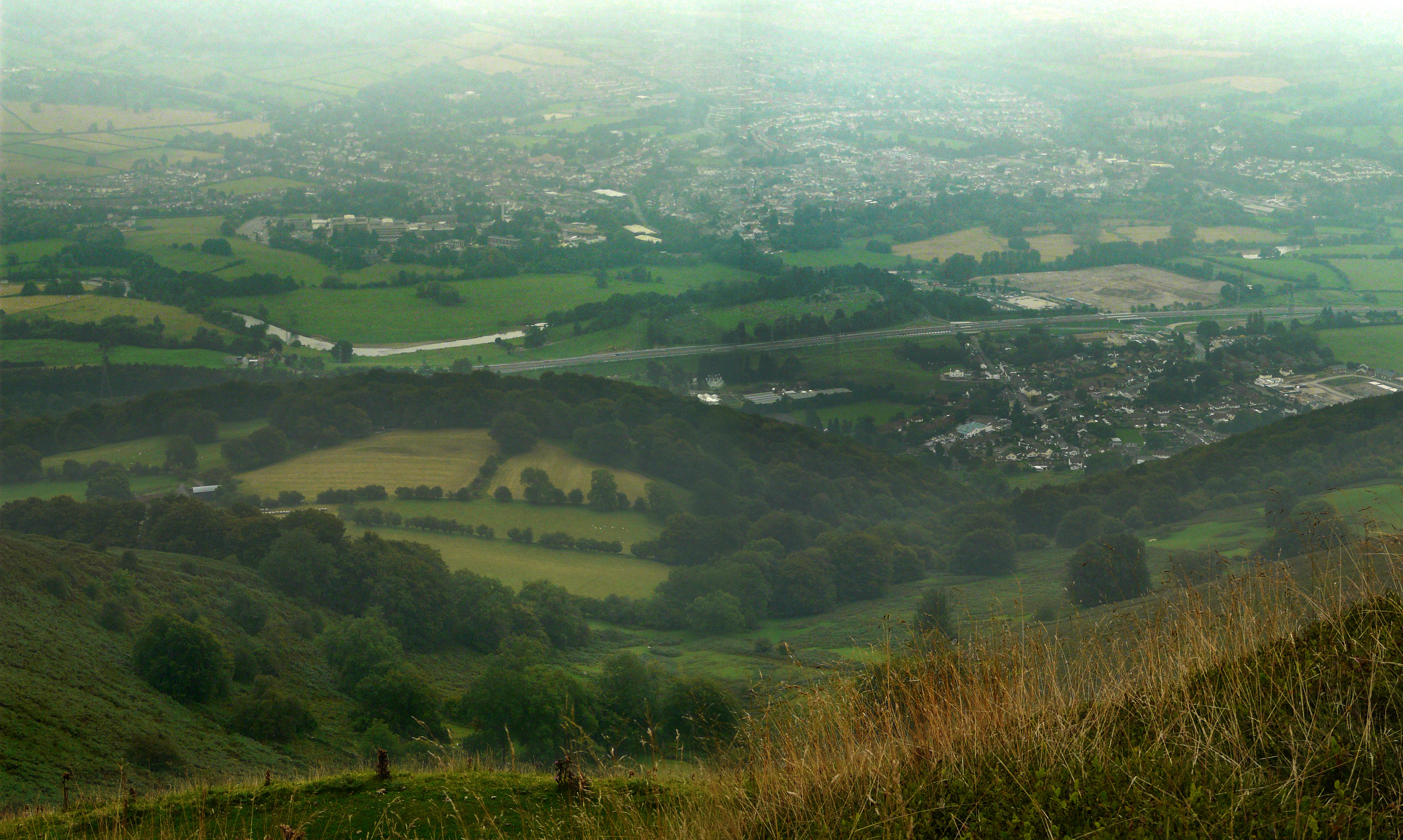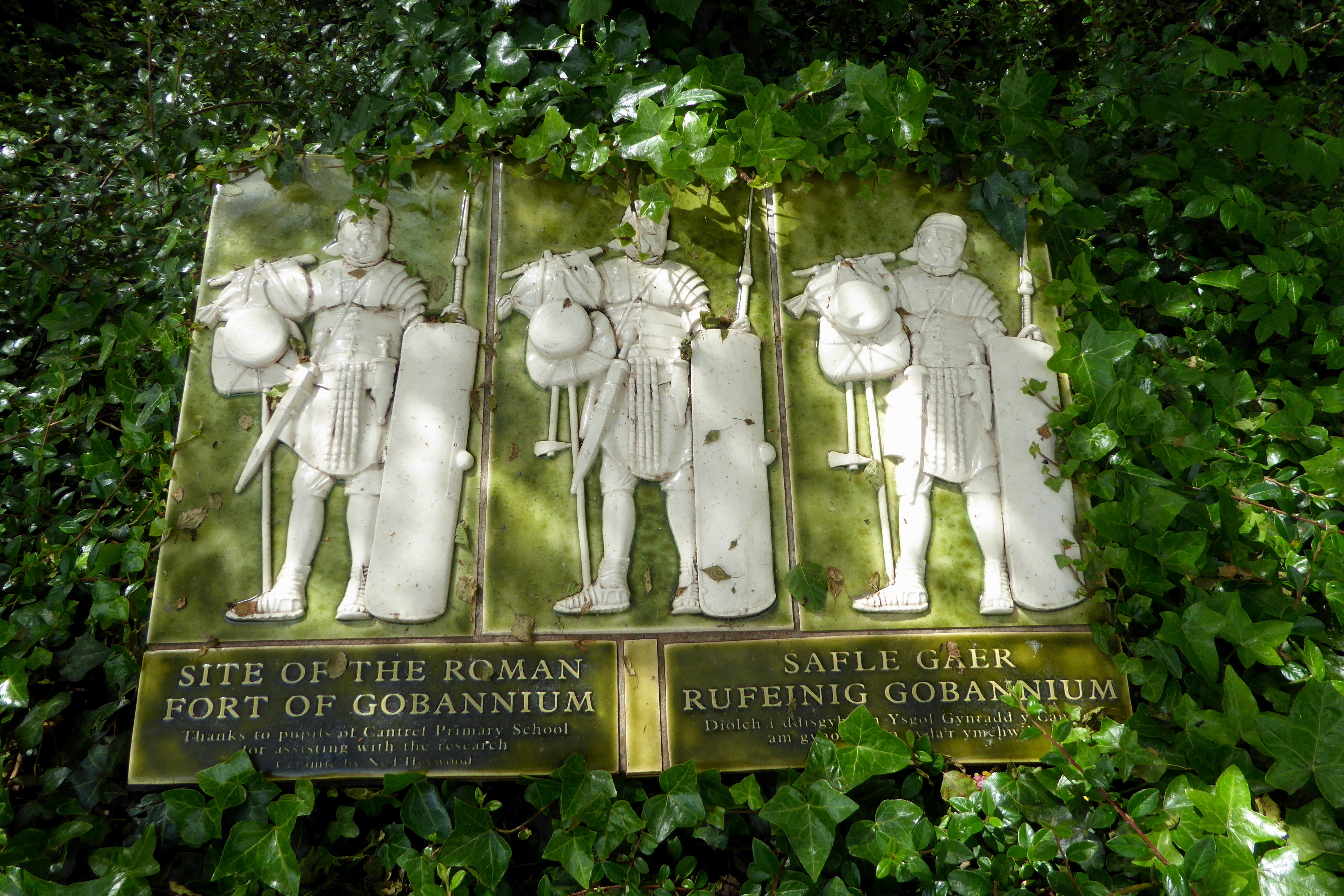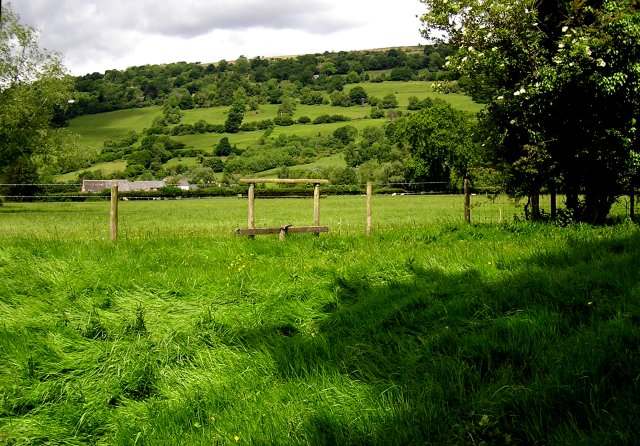|
Abergavenny
Abergavenny (; , , archaically , ) is a market town and Community (Wales), community in Monmouthshire, Wales. Abergavenny is promoted as a "Gateway to Wales"; it is approximately from the England–Wales border, border with England and is located where the A40 road, A40 trunk road and the recently upgraded A465 road, A465 Heads of the Valleys road meet. Originally the site of a Castra, Roman fort, Gobannium, it became a Middle Ages, medieval Defensive wall, walled town within the Welsh Marches. The town contains the remains of a medieval stone castle built soon after the Norman invasion of Wales, Norman conquest of Wales. Abergavenny is situated at the confluence of the River Usk and a tributary stream, the Gavenny. It is almost entirely surrounded by mountains and hills: the Blorenge (), the Sugar Loaf, Monmouthshire, Sugar Loaf (), Skirrid Fawr (Great Skirrid), Ysgyryd Fach (Little Skirrid), Deri, Rholben and Mynydd Llanwenarth, known locally as "Llanwenarth Breast". Abergav ... [...More Info...] [...Related Items...] OR: [Wikipedia] [Google] [Baidu] |
Monmouthshire
Monmouthshire ( ; ) is a Principal areas of Wales, county in the South East Wales, south east of Wales. It borders Powys to the north; the English counties of Herefordshire and Gloucestershire to the north and east; the Severn Estuary to the south, and Torfaen, Newport, Wales, Newport and Blaenau Gwent to the west. The largest town is Abergavenny, and the administrative centre is Usk. The county is administered by Monmouthshire County Council. It sends two directly-elected members to the Senedd at Cardiff and one elected member to the Parliament of the United Kingdom, UK parliament at Westminster. The county name is identical to that of the Monmouthshire (historic), historic county, of which the current local authority covers the eastern three-fifths. Between 1974 and 1996, the county was known as Gwent (county), Gwent, recalling Kingdom of Gwent, the medieval kingdom which covered a similar area. The present county was formed under the Local Government (Wales) Act 1994, which ... [...More Info...] [...Related Items...] OR: [Wikipedia] [Google] [Baidu] |
Abergavenny Town Hall
Abergavenny Town Hall () is a municipal building located on Cross Street, Abergavenny in Monmouthshire, Wales. The town hall, which also houses the town's market, is a Grade II listed building. History The first building on the site was a market hall which had been financed by a legacy from the local member of parliament, Philip Jones, and which was completed in the early 17th century. Following their appointment in 1794, one of the first acts of the new Abergavenny Improvement Commissioners was to commission a new market hall which was designed by the well-known Regency and Georgian era architect, John Nash, and completed in 1796. In the 1860s, in anticipation of a further increases in their responsibilities, including those of an urban sanitary authority, the commissioners decided to procure a town hall which would be built on the same site. Construction of the new building, which was built with old red sandstone with Bath limestone and slate roofs, started in 1869. It w ... [...More Info...] [...Related Items...] OR: [Wikipedia] [Google] [Baidu] |
River Gavenny
The River Gavenny or sometimes the Gavenny River () is a short river in Monmouthshire in south Wales. It rises southwest of the village of Llanvihangel Crucorney from springs near Penyclawdd Court, supplemented by springs in Blaen-Gavenny Wood and tributary streams there and within the Woodland Trust-owned Great Triley Wood. It flows south for about to its confluence with the River Usk towards the eastern end of Castle Meadows at Abergavenny. The town derives its English-language placename, name from the Gavenny's confluence ('aber' in Welsh language, Welsh) with the River Usk. Of the buildings on the banks of the river, the Gothic architecture, Gothic Decorated style church of St Teilo's Church, Llantilio Pertholey, St Teilo at Llantilio Pertholey (OS grid ref SO 3114 1633) is especially notable. Parts of the church date from the thirteenth century with multiple additions since. Blaengavenny Farm, the name of which signifies the 'head of the Gavenny', is a sixteenth-century far ... [...More Info...] [...Related Items...] OR: [Wikipedia] [Google] [Baidu] |
Blorenge
Blorenge, also called The Blorenge (; ), is a prominent hill overlooking the valley of the River Usk near Abergavenny, Monmouthshire, southeast Wales. It is situated in the southeastern corner of the Brecon Beacons National Park. The summit plateau reaches a height of . Geography Blorenge overlooks the market town of Abergavenny and the villages of Llanfoist, Llanellen and Govilon in the Usk Valley to the north. At the foot of the hill lies the Monmouthshire & Brecon Canal. It drops away steeply to the northwest into Cwm Llanwenarth. To the south, gentler slopes fall away to Blaenavon at the head of the Afon Lwyd, Lwyd valley. Prominent peaks seen from the Blorenge include the Skirrid to the east of Abergavenny and the Sugar Loaf, Monmouthshire, Sugar Loaf to the north. The high moorland ridge continues to the south of the minor road at Foxhunter car park and assumes the name Mynydd y Garn-fawr. The cairn referenced in the title of this southerly shoulder of Blorenge may be t ... [...More Info...] [...Related Items...] OR: [Wikipedia] [Google] [Baidu] |
A40 Road
The A40 is a trunk road which runs between London and Goodwick (Fishguard), Wales, and officially called The London to Fishguard Trunk Road (A40) in all legal documents and Acts. Much of its length within England has been superseded by motorways, such as the M40, and has lost its trunk road status, though it retains it west of Gloucester, including its length within Wales. It is approximately long. The eastern section from Denham, Buckinghamshire to Wheatley, Oxfordshire is better served by the M40 motorway, M40 and its former function of linking London with Cheltenham and Gloucester has been taken by the M4, A419 and A417 via Swindon. History The A40 1923 route was from the City of London to Fishguard. The road still begins and ends in the same places, but a number of changes have been made to its route. The first change dates from 1935, between Ross-on-Wye and Abergavenny. The original route of the A40 was via Skenfrith, avoiding Monmouth; this road was renumbered the B45 ... [...More Info...] [...Related Items...] OR: [Wikipedia] [Google] [Baidu] |
Gobannium
Gobannium was a Roman fort and civil settlement or Castra established by the Roman legions invading what was to become Wales in the Roman Era, Roman Wales and lies today under the market town of Abergavenny, Monmouthshire in south east Wales. Documentary evidence Gobannium was first recorded in the Antonine Itinerary of the late 2nd century AD as 'Gobannio' sited some 12 miles from Burrium, (modern Usk) and 22 miles south of Magnis (Kenchester), Magnis (near Kenchester, Herefordshire). Gobannium is also mentioned in the Ravenna Cosmography as 'Bannio', sited between Isca Augusta the major legionary fortress covering South Wales (Caerleon) further down the River Usk, and Bremia (fort), Bremia (Llanio, Ceredigion). The name is thought to have a Celts, Celtic or Brythonic languages, Brythonic language origin and linked to Gobannus and Gofannon, and may mean 'the river of the blacksmiths'. Location Gobannium lies in the broad valley of the River Usk surrounded by hills and mou ... [...More Info...] [...Related Items...] OR: [Wikipedia] [Google] [Baidu] |
A465 Road
The A465 is a Trunk roads in Wales, trunk road that runs from Bromyard in Herefordshire, England to Llandarcy near Swansea in south Wales. The western half in Wales is known officially as the Neath to Abergavenny Trunk Road, but the section from Abergavenny to the Vale of Neath is more commonly referred to as the Heads of the Valleys Road because it links the northern heads of the South Wales Valleys. This section was also the subject of #Major upgrade, a major upgrade programme to convert the road into a dual carriageway with two lanes in each direction, and the final completed section opened on 31 May 2025, bringing a 23-year long scheme to a close. Approximately following the southern boundary of the Bannau Brycheiniog National Park, the Ordnance Survey ''Pathfinder'' guide describes it as the unofficial border between rural and industrial South Wales. The A465 provides an alternative route between England and the counties in South West Wales and to the Ferry, ferries to Repub ... [...More Info...] [...Related Items...] OR: [Wikipedia] [Google] [Baidu] |
River Usk
The River Usk (; ) rises on the northern slopes of the Black Mountain (''y Mynydd Du''), Wales, in the westernmost part of the Brecon Beacons National Park. Initially forming the boundary between Carmarthenshire and Powys, it flows north into Usk Reservoir, then east through Sennybridge to Brecon before turning southeast to flow by Talybont-on-Usk, Crickhowell and Abergavenny, after which it takes a more southerly course. Beyond the eponymous town of Usk, it passes the Roman legionary fortress of Caerleon to flow through the heart of the city of Newport and into the Severn Estuary at Uskmouth near the Newport Wetlands. The river is about long. According to the '' Encyclopaedia of Wales'' (which gives a figure of ), the river is the longest to flow wholly within Wales. The Monmouthshire and Brecon Canal follows the Usk for most of the length of the canal. Etymology The name of the river derives from a Common Brittonic word meaning "abounding in fish" (or poss ... [...More Info...] [...Related Items...] OR: [Wikipedia] [Google] [Baidu] |
Black Mountains, Wales
The Black Mountains ( or sometimes ) are a group of hills on the England–Wales border. The Welsh part is larger and located in south-east Powys and north-west Monmouthshire, and the smaller English part is in western Herefordshire. The range may be roughly defined as those hills contained within a triangle defined by the towns of Abergavenny in the southeast, Hay-on-Wye in the north and the village of Llangors in the west. Other gateway towns to the Black Mountains include Talgarth and Crickhowell. The Welsh part of the Black Mountains is the easternmost of the four ranges of hills that comprise the Brecon Beacons National Park; they should not be confused with the westernmost, the similarly-named Black Mountain (range), Wales, Black Mountain. The range of hills is well known to walkers and ramblers for the ease of access and views from the many ridge trails, such as that on the Black Hill (Herefordshire), Black Hill in Herefordshire, at the eastern edge of the massif. Gospe ... [...More Info...] [...Related Items...] OR: [Wikipedia] [Google] [Baidu] |
Llanwenarth
Llanwenarth is a small village and parish in the Usk Valley of Monmouthshire, south-east Wales, United Kingdom. It is in the community of Llanfoist Fawr and covered by the electoral ward of Llanwenarth Ultra. Location Llanwenarth is located west of the market town of Abergavenny, close to the banks of the River Usk. History and amenities St Peter's Church is the parish church: an ogival-headed priest's doorway in the chancel, and two windows with reticulated tracery are assigned to the fourteenth century, and a lancet in the west wall of the nave seems to be from the thirteenth, where a square tower with battlemented top was added later. The village once had a Victorian schoolhouse (now demolished). The village, which has the full name of Llanwenarth Citra, sits in flattish grassy pastures at geograph.org b ... [...More Info...] [...Related Items...] OR: [Wikipedia] [Google] [Baidu] |
Ysgyryd Fach
Ysgyryd Fach is a hill one mile east of Abergavenny in the county of Monmouthshire, south Wales. It is often referred to in English as 'Little Skirrid' or sometimes as 'Skirrid Fach'. Its summit height is just over . A conifer plantation extends over much of the hill including its summit; prior to felling of trees on the upper slopes in 2012 outward views were therefore restricted. The hill is considered to be one of the 'seven hills of Abergavenny'. Geology The hill is formed from mudstones of the St Maughans Formation of the Old Red Sandstone laid down in the Devonian period. Thin beds of calcrete, a thin limestone of terrestrial origin, occur on the hill; its very summit consists of sandstone from the Senni Formation (formerly referred to as the 'Senni Beds'). There are few rock exposures and the lower slopes are mantled by glacial till image:Geschiebemergel.JPG, Closeup of glacial till. Note that the larger grains (pebbles and gravel) in the till are completely surrounded ... [...More Info...] [...Related Items...] OR: [Wikipedia] [Google] [Baidu] |
Skirrid Fawr
Skirrid Fawr ( , ), often referred to as just the Skirrid, is a traditional Christian pilgrimage site and an easterly outlier of the Black Mountains in Wales. It forms the easternmost part of the Brecon Beacons National Park. The smaller hill of Ysgyryd Fach or "Little Skirrid" () lies about south. It is high and lies just to the north-east of Abergavenny, Monmouthshire, about from the English border. The Beacons Way passes along the ridge. Geology The distinctive shape of this Old Red Sandstone hill comprises a long ridge oriented nearly north–south, with a jagged western side resulting from ice age landslips . The upper slopes of the hill are composed of Devonian age sandstones assigned to the Senni Formation (formerly known as the "Senni Beds"). These overlie weaker mudstones of the St Maughans Formation - a situation which has contributed to the instability of the hill's steep flanks, resulting in extensive landslips, notably affecting the northwestern ... [...More Info...] [...Related Items...] OR: [Wikipedia] [Google] [Baidu] |








